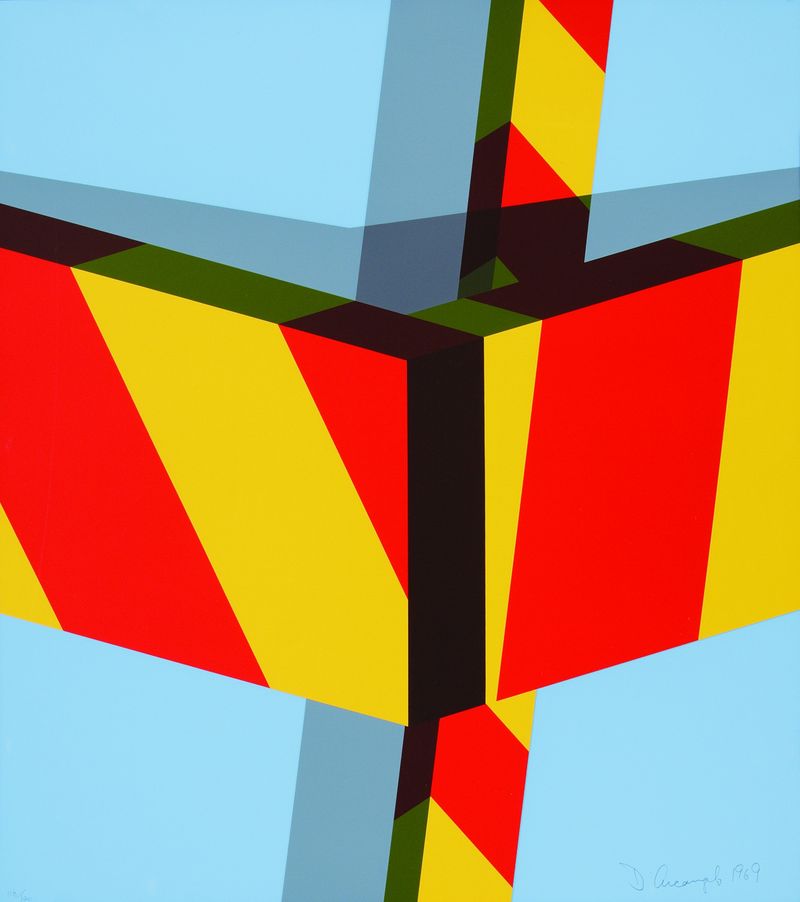Screenprint on cardboard
Dimensions: 65 x 57 cm
Signature, inscriptions, markings: signed and dated at lower right, numbered at lower left
Copy Number: 113/120
Accession Number: 1002113
New York artist Allan D'Arcangelo dealt with the American landscape and highway culture in his paintings throughout his life, using the stylistic devices of Pop Art and color field painting.1 He placed the logos of brand names, gas stations, and signs of road signs on very large homogeneous color fields, which are harshly delineated from each other in a few strong colors. In the work Landscape, three colored road signs standing in the foreground are emphasized by their shadow areas given in slightly darker shades of blue against a light blue background. Two wide horizontal barrier planks, diagonally striped in bright yellow and red, meet in the center of the painting in front of a narrower, almost vertical plank. They lead the eye beyond the picture space on all four sides. In everyday traffic, these signs serve to delimit roads and their signal colors indicate danger spots. The spatially indeterminate arrangement in slight top view gives the viewer the impression of standing in front of an area that is inaccessible to him; at the same time, the demarcation conveys an idea of infinite expanse.
D'Arcangelo reduces the motifs of the highways, stored in his memory since childhood, to their simplest and most essential forms, thus leading the traffic signs and signals back into the art from which they originally came. Especially the abstract art of the Dutch Piet Mondrian and Theo van Doesburg, who simplified their paintings elementarily and reduced them to color fields in the primary colors blue, yellow, and red, contributed to the current appearance of the traffic signs and determined their simple geometric forms.2 Their function for a regimentation of traffic is broken by D'Arcangelo in the free arrangement.
Tina Kaiser
1 Kat. der Ausst. Allan D’Arcangelo. Gegenverkehr. Zentrum für aktuelle Kunst, Aachen 1969; Kat. der Ausst. Printmaking in the Pop Era. The Museum of Modern Art, New York 1999.
2 Martin Krampen, Geschichte der Straßenverkehrszeichen. Diachronische Analyse eines Zeichensystems. Tübingen 1988, S.78 (Konferenz in Den Haag); Kees Broos, Mondriaan. De Stijl en de nieuwe typografie, Amsterdam 1994.
